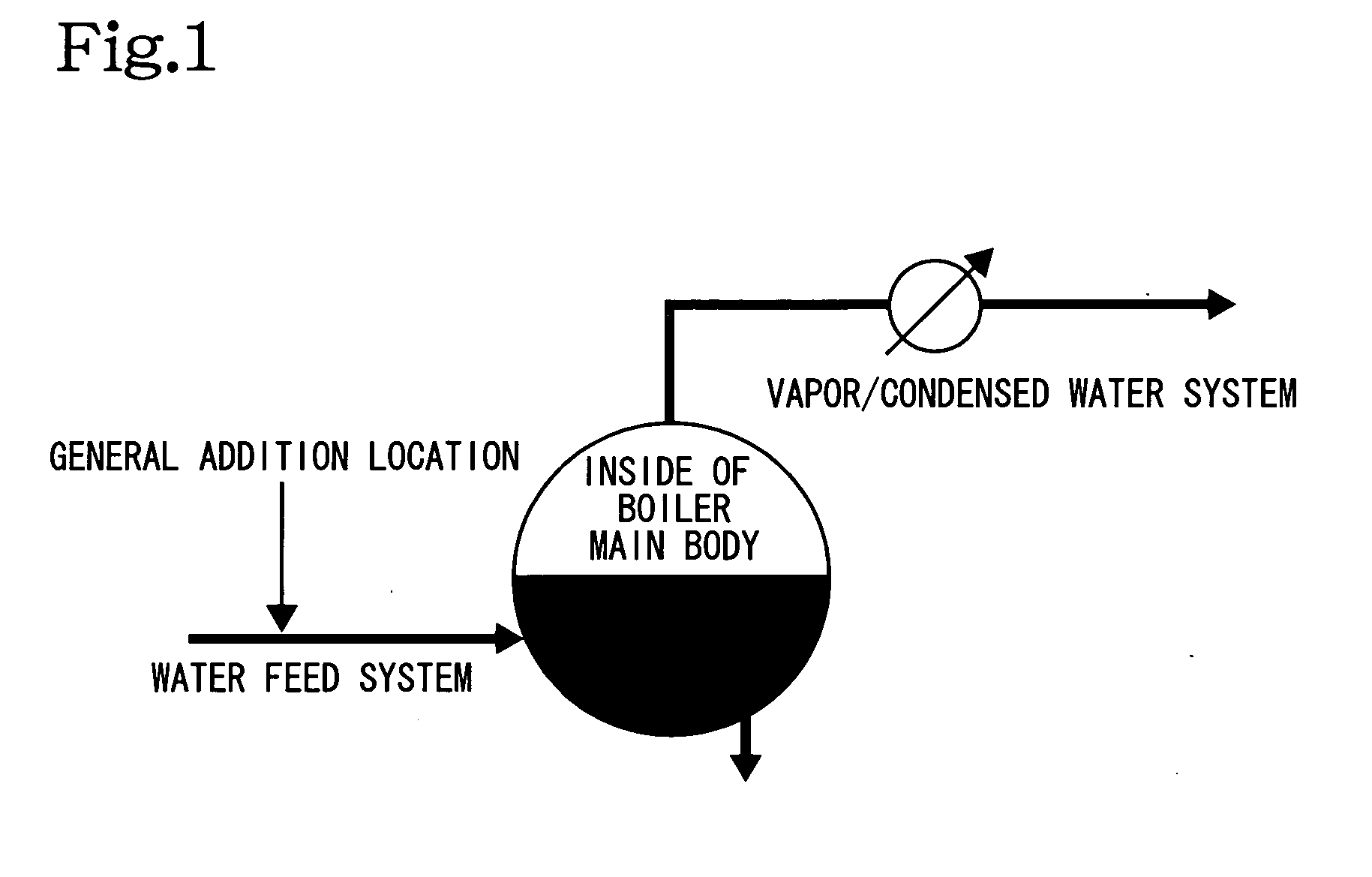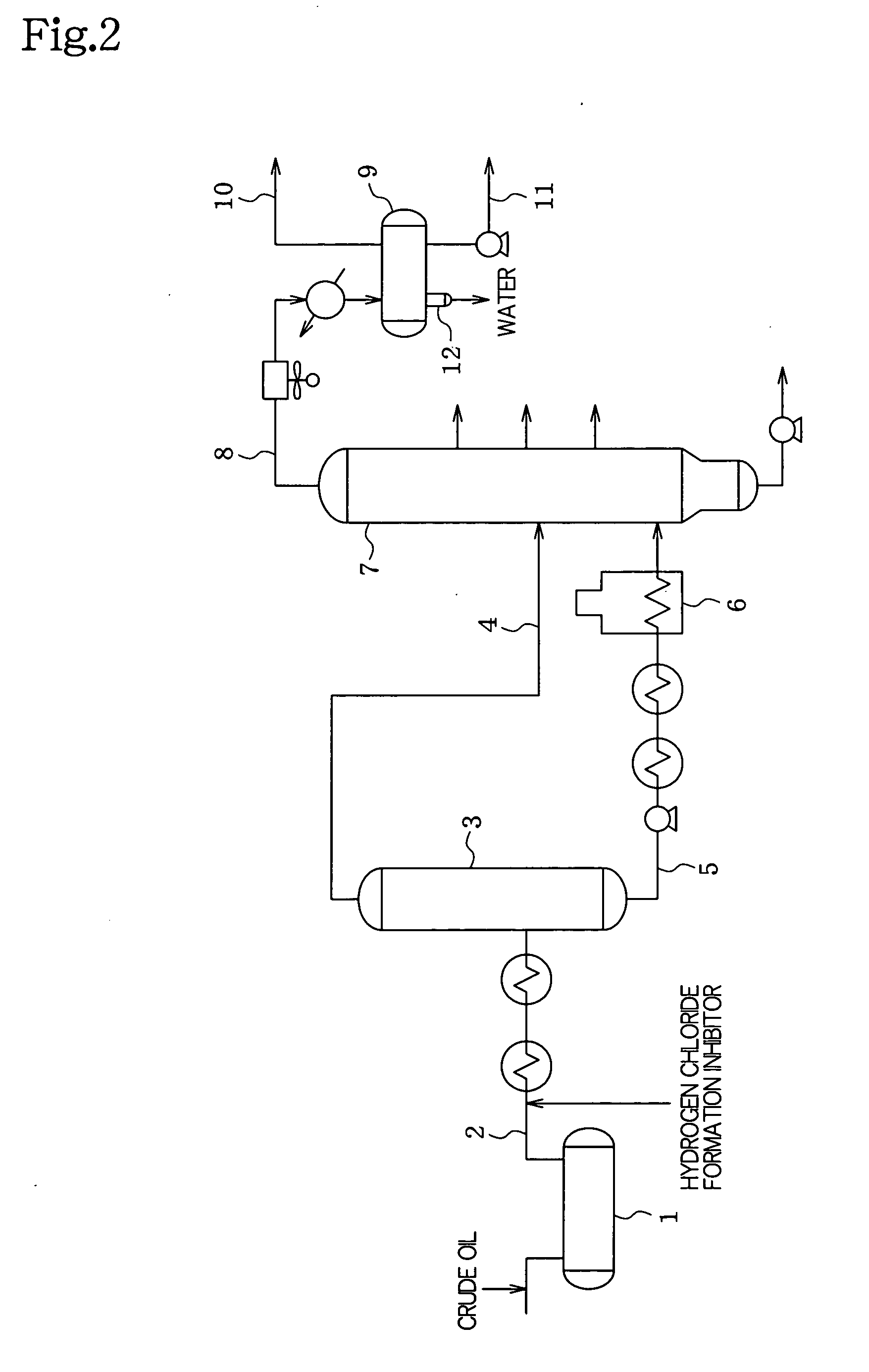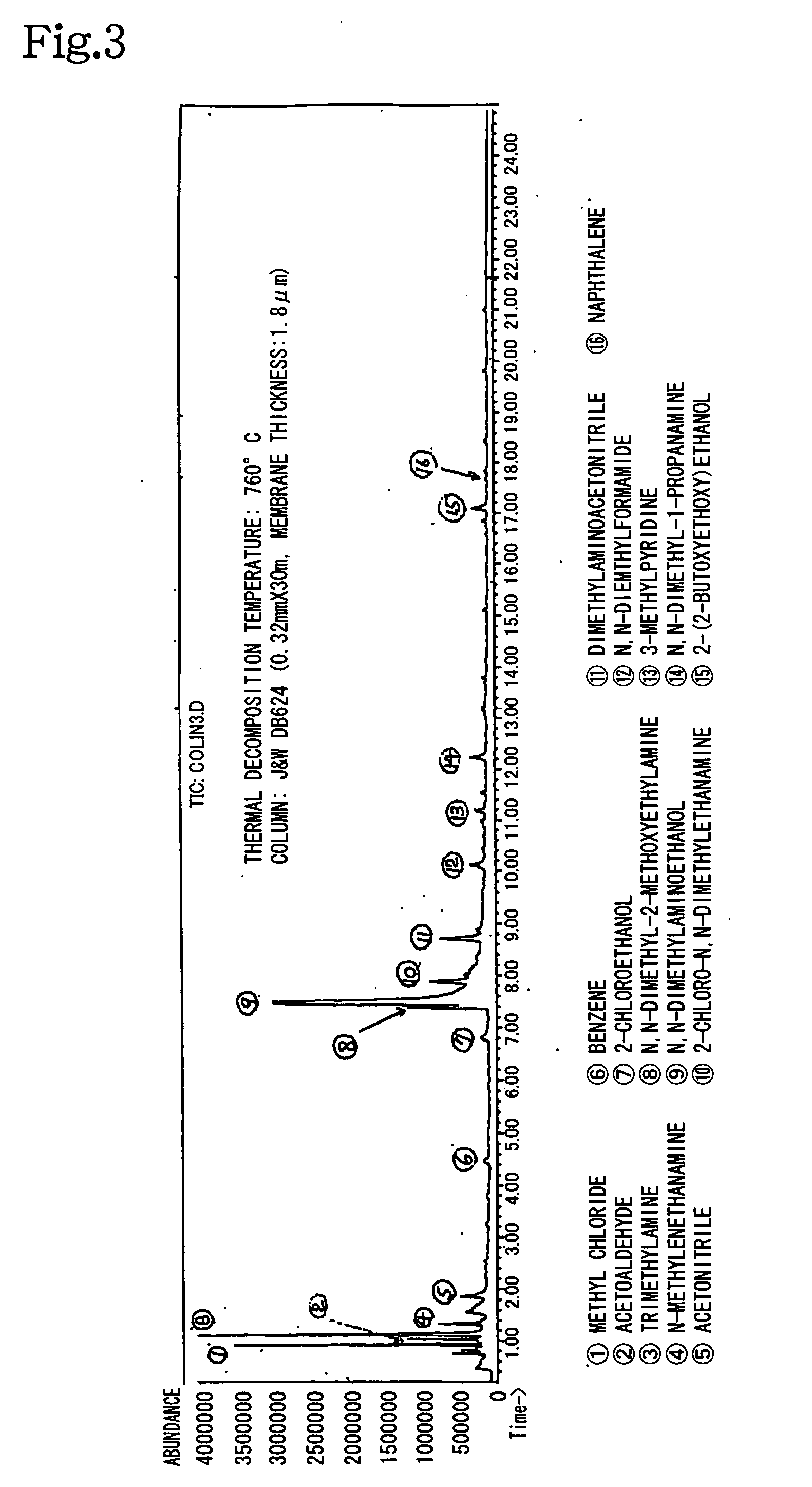Metal corrosion inhibitor and hydrogen chloride formation inhibitor in a crude oil atmospheric distillation unit
- Summary
- Abstract
- Description
- Claims
- Application Information
AI Technical Summary
Benefits of technology
Problems solved by technology
Method used
Image
Examples
example 1
[Neutralizing Capability]
[0080] The pH values of (β-hydroxyethyl)trimethylammonium hydroxide (choline), monoethanolamine, ammonia, cyclohexylamine and morpholine were measured using a pH meter (manufactured by Horiba, product name pH Meter F-21), and the respective base dissociation constants (Kb value, 25° C.) were calculated. These base dissociation constants are an indicator of neutralizing capability, with a larger number indicating that the substance has a higher degree of dissociation and is more strongly basic. The results are shown in Table 1.
TABLE 1Kb value (25° C.)Choline3.14 × 10−3Monoethanolamine3.15 × 10−5Ammonia1.82 × 10−5Cyclohexylamine3.39 × 10−4Morpholine2.09 × 10−6
[0081] It is understood from Table 1 that since (β-hydroxyethyl)trimethylammonium hydroxide has a larger base dissociation constant than the ammonia and amines, it is more strongly basic.
[0082] Next, the quantity of added ammonia or amines necessary to achieve a pH of 10.0, 10.5 or 11.0 in the boiler ...
example 2
[Corrosiveness of Hydrochlorides]
[0085] The following corrosion test was performed to evaluate the corrosiveness of hydrochlorides of ammonia or amines ((β-hydroxyethyl)trimethylammonium hydroxide, ammonia, monoethanolamine, 3-methoxypropylamine and dimethylethanolamine).
[0086] In the corrosion test, the hydrochlorides of the aforementioned ammonia and amines were poured into glass beakers at concentrations of 50% by mass (hydrochloride:pure water=1:1), and test pieces (50×15×1 mm, sanded with #400 sandpaper, degreased with toluene) of carbon steel (SPCC) were immersed in the beakers for 20 hours at 50° C. under argon deaeration (anoxic conditions). The test pieces were derusted after testing, and corrosion speed (mg / dm2 / day) was calculated from the difference in mass before and after testing. The results are shown in Table 3.
TABLE 3Kind of ammonia or aminesCorrosion speed (mdd)Choline32Ammonia256Monoethanolamine1323-methoxypropylamine480Dimethylethanolamine288
[0087] It is under...
PUM
| Property | Measurement | Unit |
|---|---|---|
| Percent by mass | aaaaa | aaaaa |
| Percent by mass | aaaaa | aaaaa |
| Density | aaaaa | aaaaa |
Abstract
Description
Claims
Application Information
 Login to View More
Login to View More - R&D
- Intellectual Property
- Life Sciences
- Materials
- Tech Scout
- Unparalleled Data Quality
- Higher Quality Content
- 60% Fewer Hallucinations
Browse by: Latest US Patents, China's latest patents, Technical Efficacy Thesaurus, Application Domain, Technology Topic, Popular Technical Reports.
© 2025 PatSnap. All rights reserved.Legal|Privacy policy|Modern Slavery Act Transparency Statement|Sitemap|About US| Contact US: help@patsnap.com



